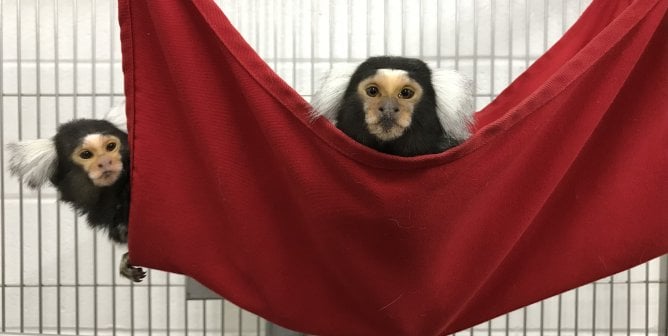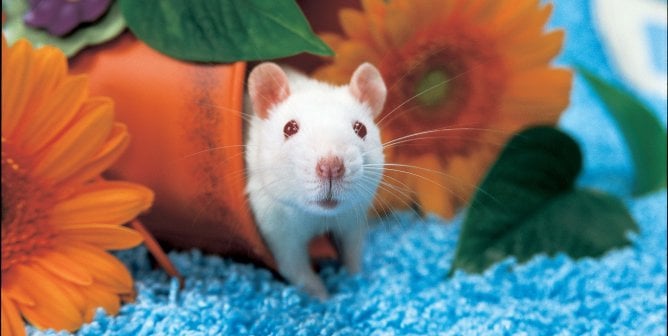The idea of holding a powerful computer in the palm of your hand was almost unimaginable in the 1950s (back when personal computers didn’t even exist). And yet, smart phones are an everyday necessity for many of us today. Thanks to the constant, mold-breaking evolution of technology, current phone models allow us to do everything from streaming live footage of outer space to ordering a vegan burger online.
As technology keeps advancing, experimenters who use animals as test subjects—and government agencies that fund them—are still stuck in the Dark Ages. While many forward-thinking, humane research methods are available, including organs-on-chips, brain organoids, and advanced computer modeling, experimenters are still subjecting monkeys and other animals to painful and invasive experiments that have no relevance to human health. In primate laboratories, experimenters pump experimental drugs into animals’ stomachs, infect monkeys with deadly diseases, take infant monkeys away from their mothers, and much more.
Imagine if a cell phone call failed 95% of the time, like the estimated percentage of new drugs that fail in human trials after testing safe and effective in animals. Or if a smart phone didn’t work at all, like 100% of the HIV vaccines that failed to provide sufficient protection in humans, despite their effectiveness in monkeys. Would we still be pouring multiple millions of dollars into using the same failed methods? Probably not—but this is exactly what experimenters who use monkeys, mice, rats, rabbits, cats, dogs, and others as “models” do, supposedly to study human diseases.
You may be shocked by a side-by-side comparison showing how much phone technology has advanced through the decades—and how little experiments on monkeys have changed:
The 1950s: Rotary Phones Were Welcomed Into Households While Harry Harlow Devised His Infamous Nursery-Rearing Experiments
By the 1950s, bulky rotary phones were common household utilities. To save money, some homes shared a number, known as a “party line,” with another one. At the same time, Harry Harlow began his infamously cruel experiments. He tore infant monkeys away from their mothers and replaced them with cloth “mothers” to induce depression in the young animals. His sadistic experiments left them with debilitating trauma.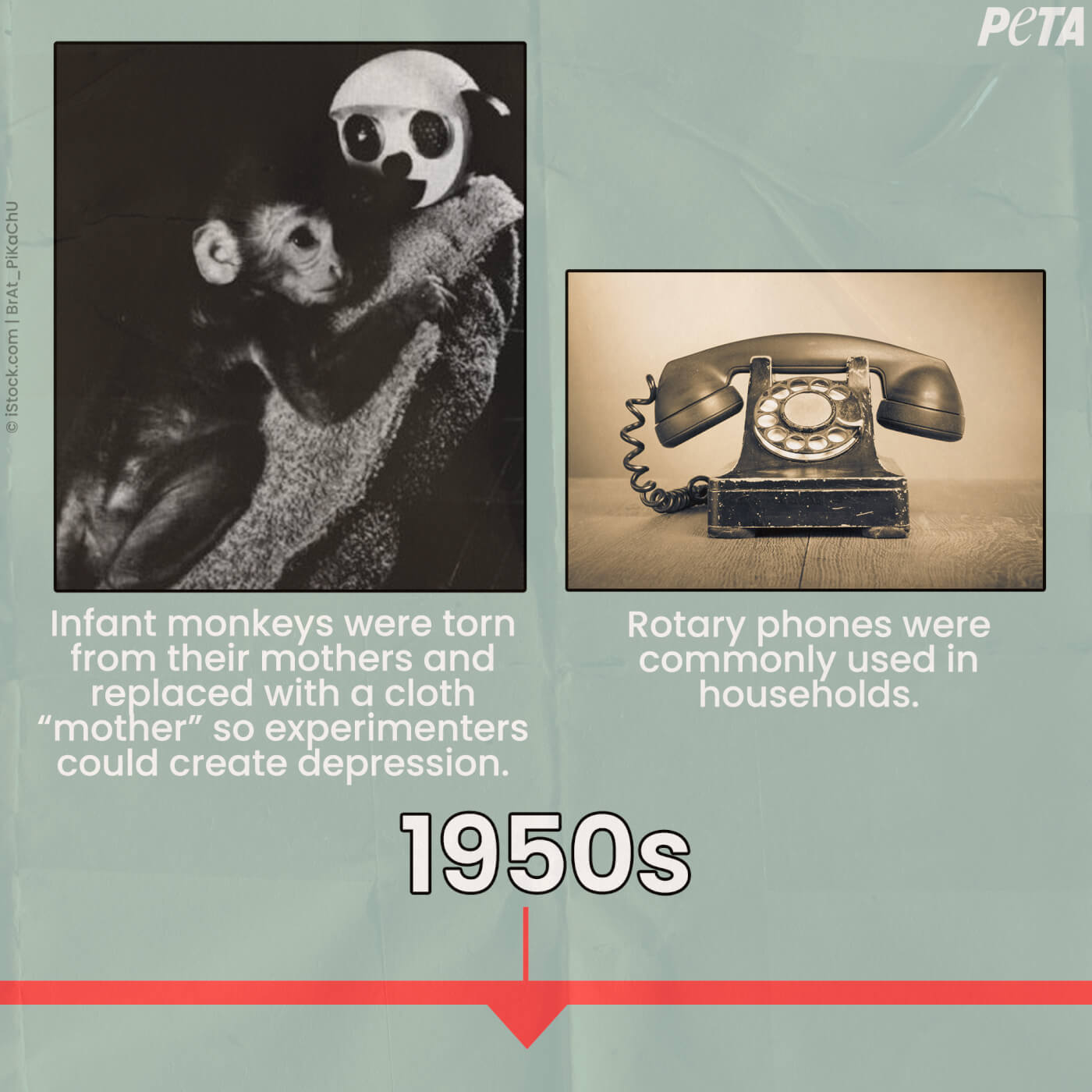
The 1960s: A Sleeker ‘Princess Phone’ Was Released While Experimenters Launched a Monkey Into Space
In 1963, the Princess phone, featuring a more compact design with the ringer inside the phone, was marketed to young women for making convenient calls to friends. Six years later, a monkey named Bonny was launched into space to “test the limits of human endurance in space.” He died within days after returning.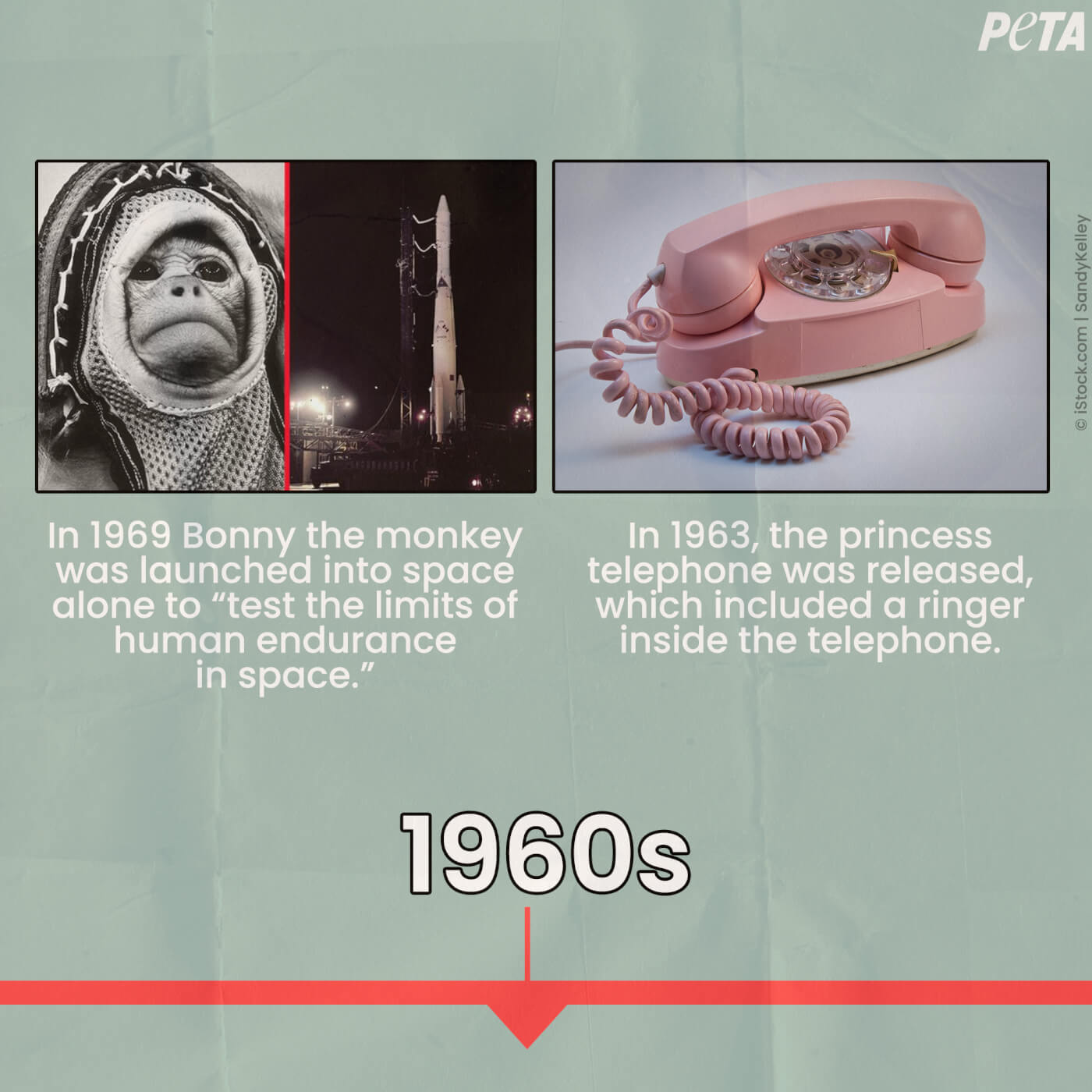
The 1970s: Telephones Were Updated With Buttons Instead of Dials While Experimenters Were Shocking Monkeys in Labs
By the 1970s, the rotary phone was largely replaced by the push-button phone, making it much easier to dial numbers. While phones were becoming streamlined, experimenters were conducting a test in which they restrained a monkey and delivered painful shocks through metal plates under his feet, after repeatedly exposing him to radiation and nerve gas.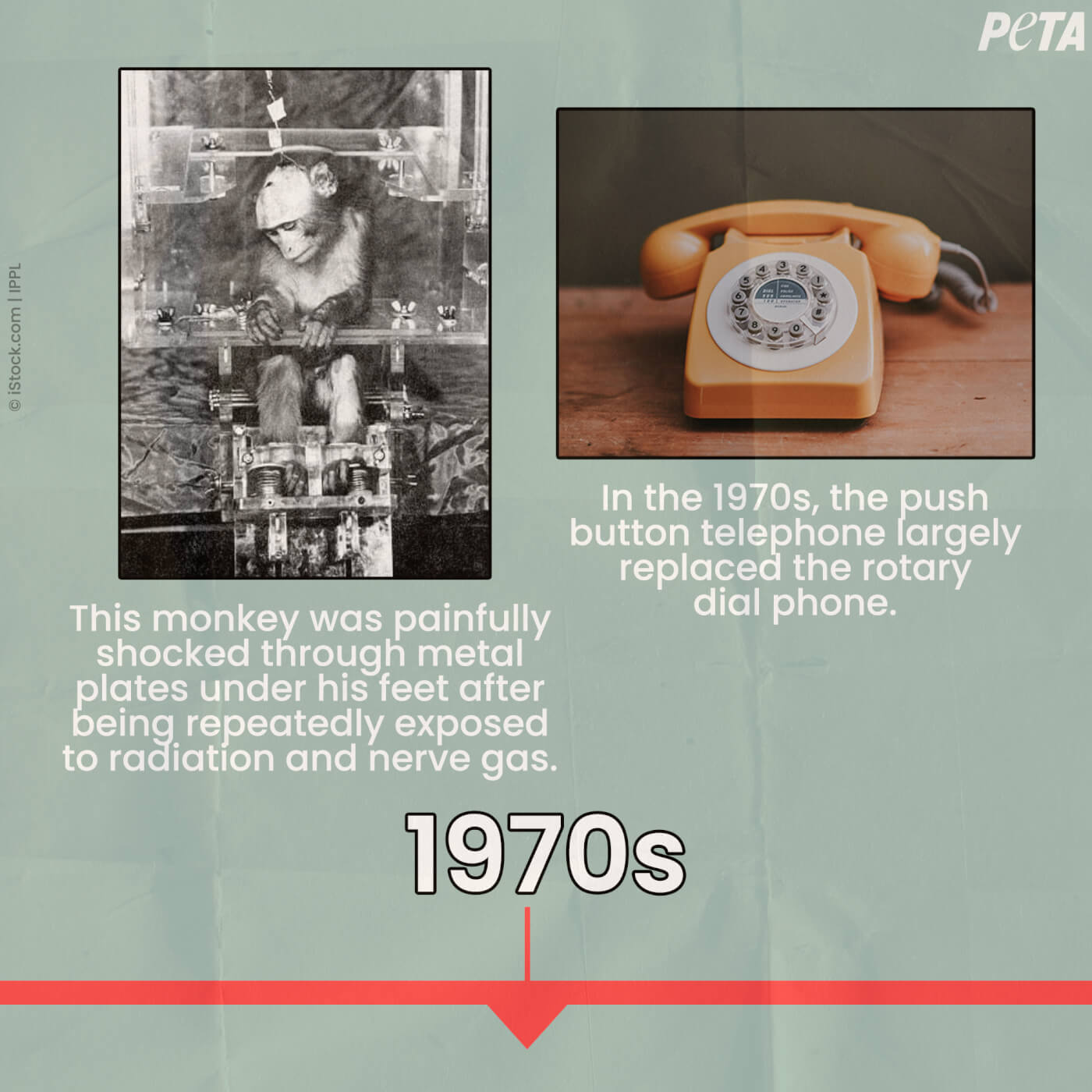
The 1980s: The World Was Introduced to the First Handheld Cell Phone, While Experimenters Were Paralyzing Monkeys
In 1983, the first commercial mobile phone hit the market, changing the way we use phones forever. While society was being introduced to this technological revolution, the Institute for Behavioral Research (IBR) was subjecting monkeys to debilitating surgeries in which experimenters severed their spinal nerves, rendering one or more of their limbs useless. Using electric shocks, food deprivation, and other cruel methods, experimenters forced them to try to regain the use of their impaired limbs to pick up raisins from a tray—or else go without food. PETA launched a shocking investigation into the IBR, revealing severely disabled, injured, distressed, and underfed monkeys living inside desolate cages caked with feces.
PETA’s landmark investigation led to the nation’s first arrest and criminal conviction of an animal experimenter for cruelty to animals, the first confiscation of abused animals from a laboratory, and the first U.S. Supreme Court victory for animals used in experiments. Later, the IBR closed its doors.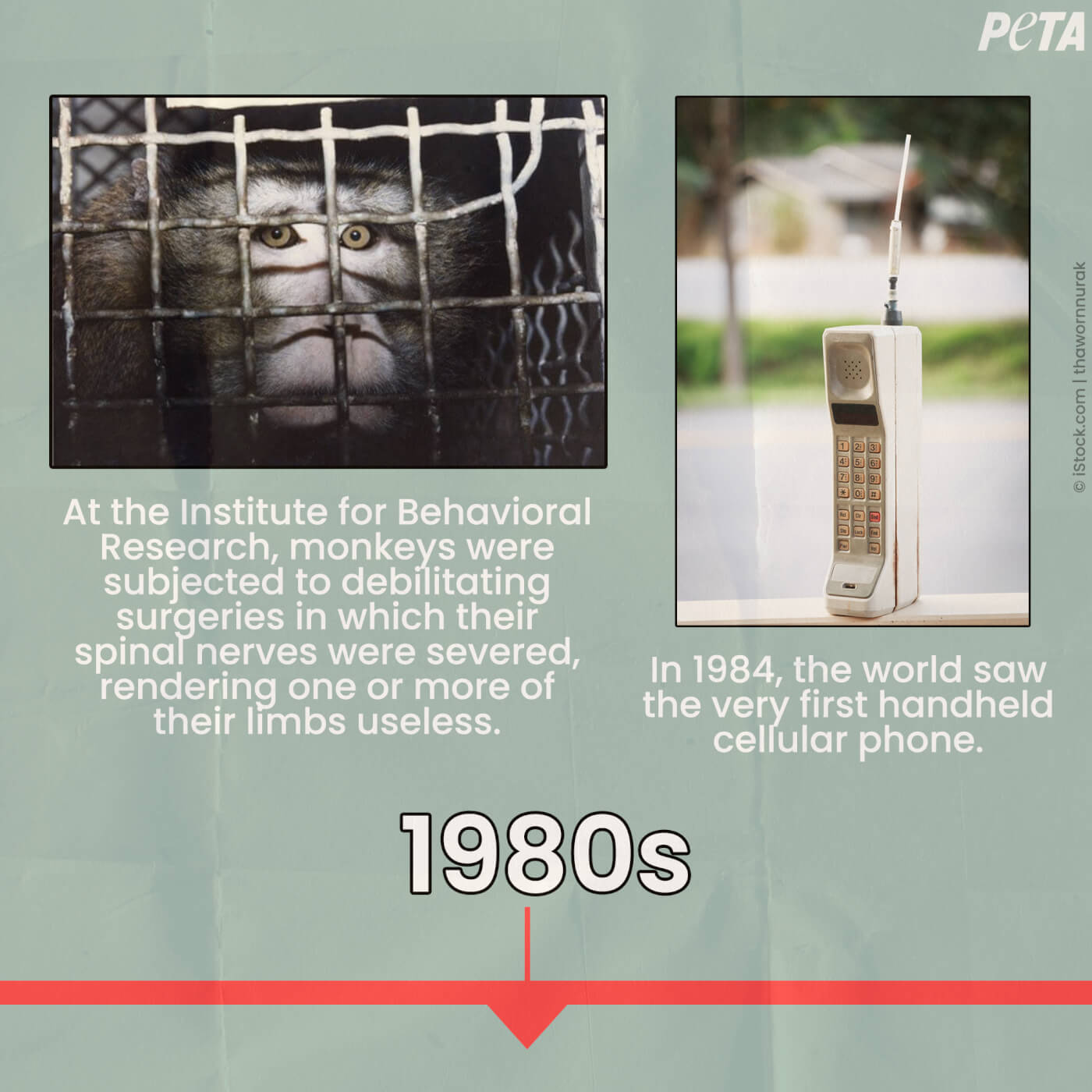
The 1990s: The Cell Phone Gained Popularity While Experimenters Were Restraining Monkeys in Straitjackets
In 1996, the StarTAC mobile phone set off the revolution of flip phones. In the same decade that pocket-sized cell phones were taking off, French, Russian, and U.S. experimenters were restraining monkeys in straitjackets, implanting electrodes into their bodies, and launching them into space.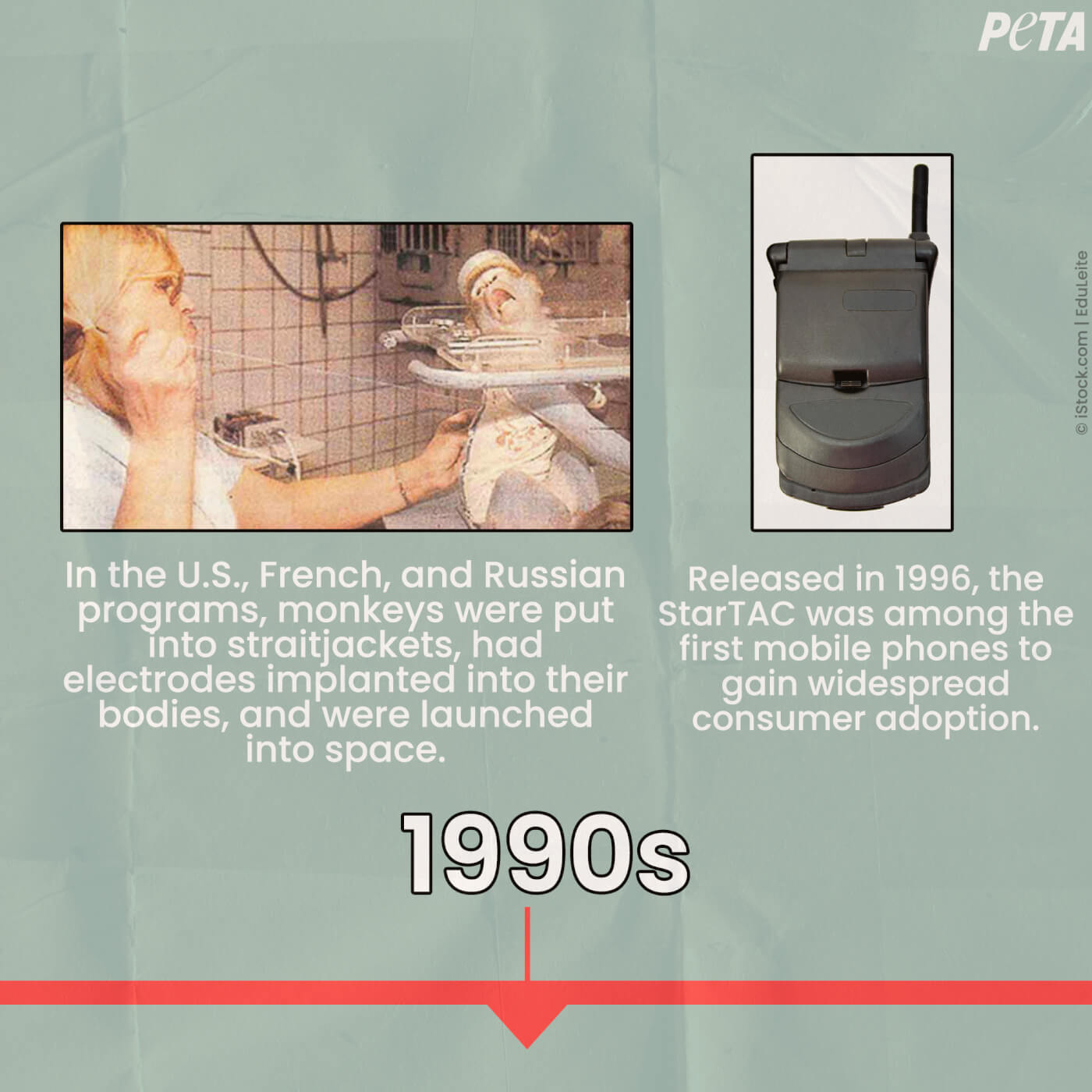
The 2000s: Razr Phone vs. Monkey Skull Experiments
The Razr phone was unveiled in 2004, featuring a thin, sleek design that gave it a trendy appeal. As texting became ubiquitous, the University of Utah was imprisoning monkeys in cages, keeping them thirsty, and drilling holes into their skull.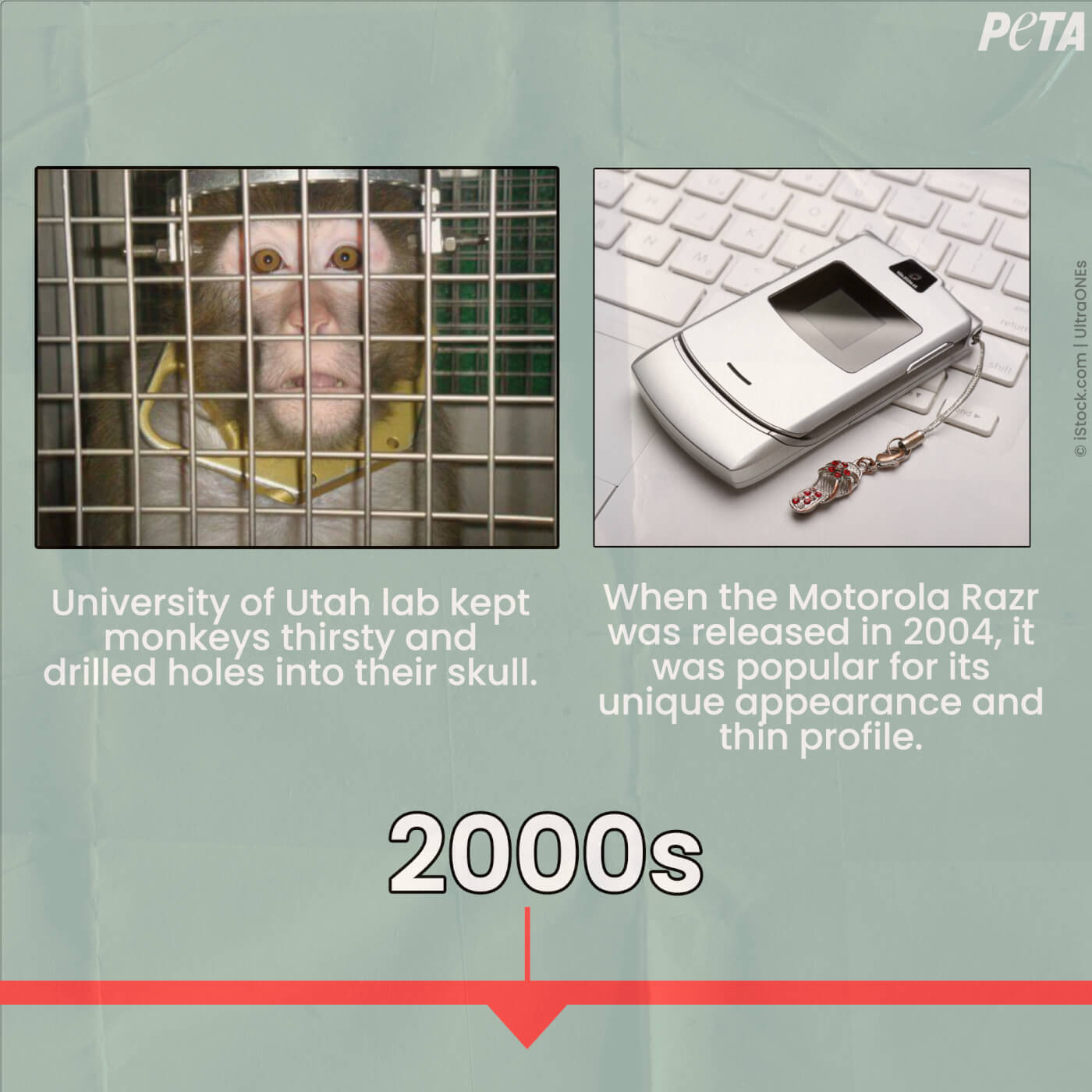
The 2010s: The iPhone 6 Sparked Global Hype While NIH Induced Severe Psychological Trauma in Monkeys
In 2014, Apple released the iPhone 6, introducing a redesign with a better camera, a longer battery life, and more user-friendly features. Meanwhile, the National Institutes of Health (NIH) was forcing monkeys to undergo years of terrifying and often painful experiments to exacerbate their symptoms of mental illness and test the severity of their psychological trauma.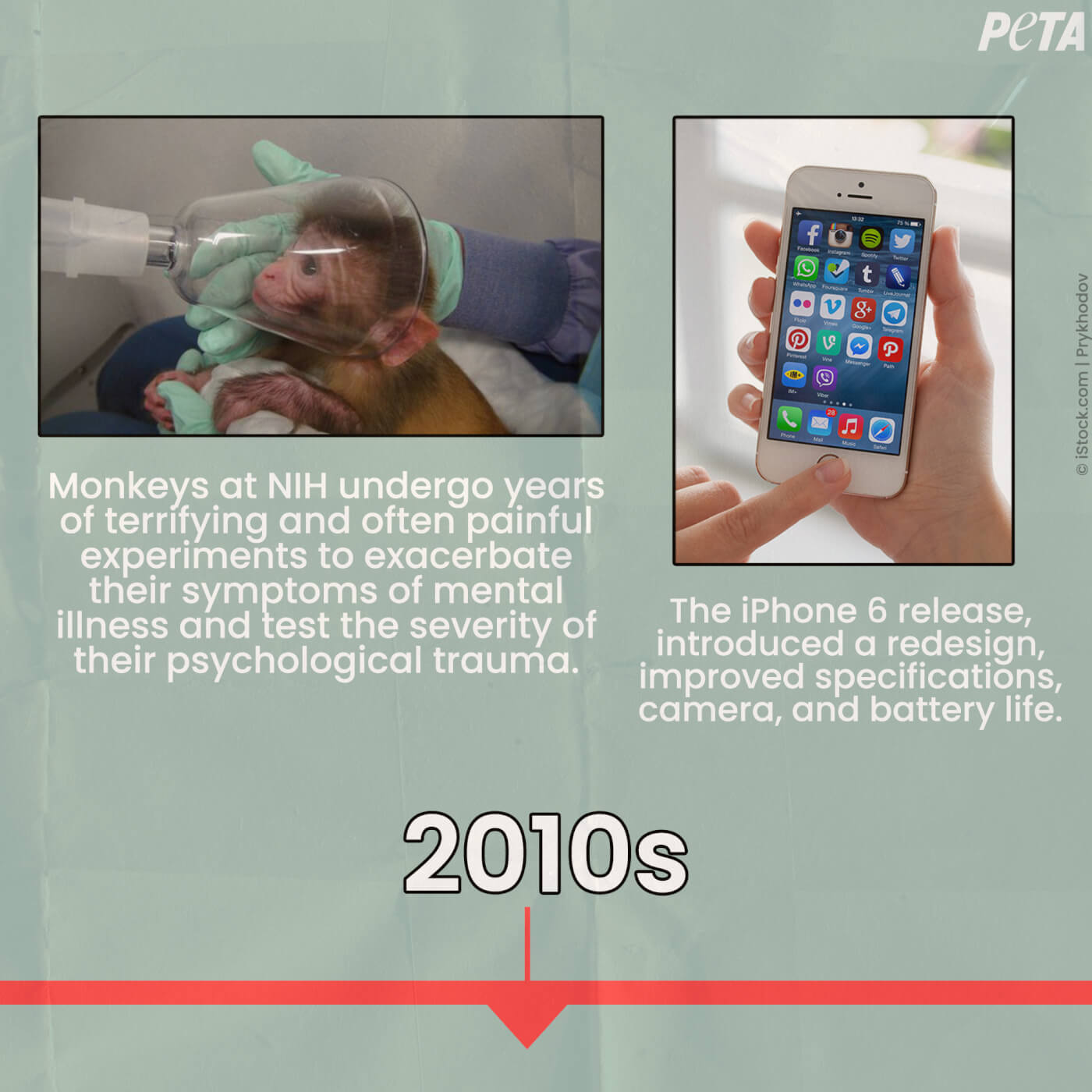
The 2020s: The iPhone 12 Was Released While NIH Continued Its Torment
By 2020, several new models of the iPhone had been released. Still, not much has changed for monkeys in laboratories in the decades following Harlow’s traumatizing tests. Infant monkeys are still taken from their mothers, and government experimenter Elisabeth Murray damages monkeys’ brains and induces trauma by scaring them with realistic-looking plastic spiders and snakes.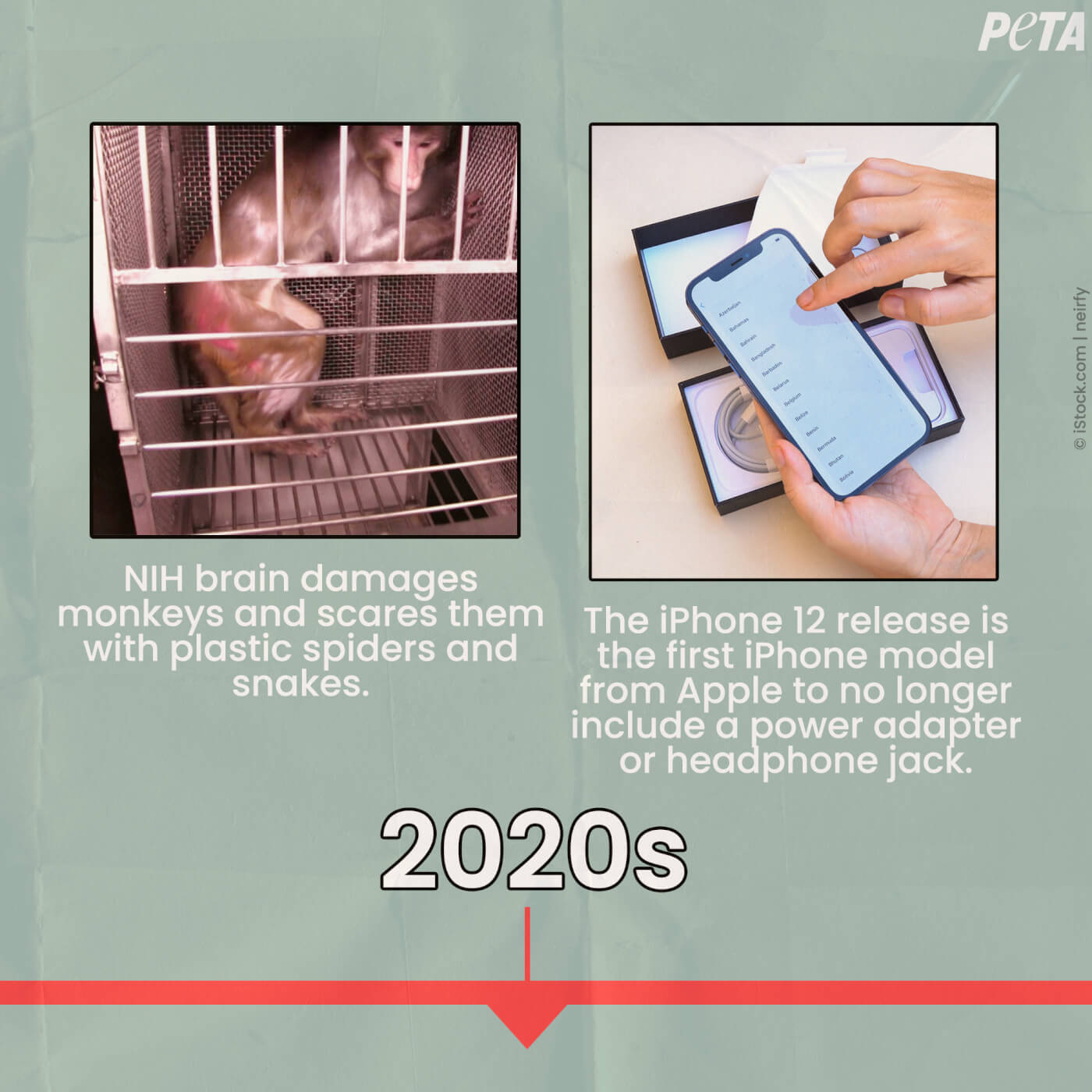
Monkeys are intelligent, social animals—not test subjects. It’s clear that inhumane, archaic methods of testing on animals aren’t working to advance science—and it’s time to adopt a progressive, ethical approach to research. With PETA’s Research Modernization Deal, which maps out a strategy for replacing the use of animals in experiments with human-relevant methods, we can finally help create a kinder and more advanced world.


